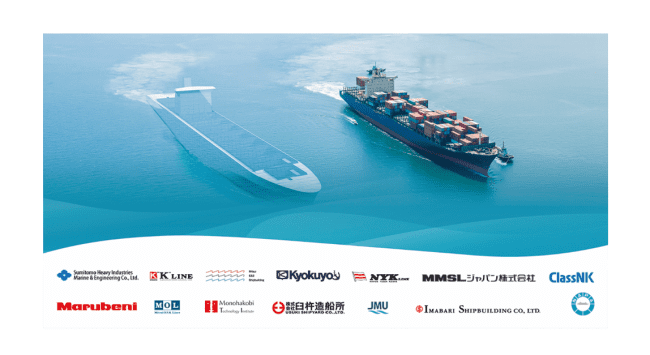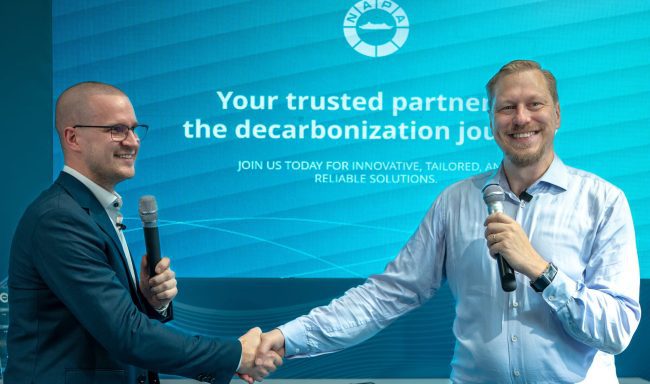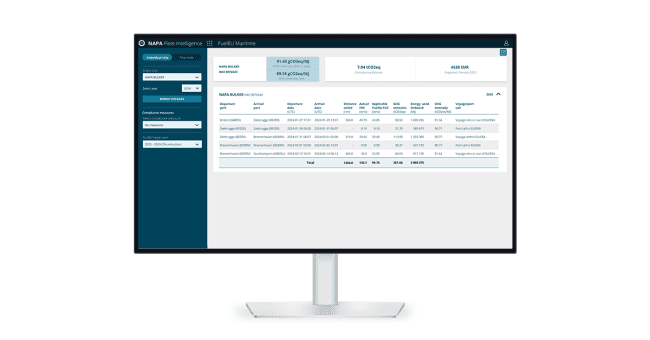NAPA joins the International Windship Association
NAPA is expanding its efforts to support the decarbonization of shipping by becoming an associate member of the International Windship Association (IWSA).
IWSA’s Mission is to promote the use of wind propulsion in commercial shipping to reduce fuel consumption and decrease climate change related emissions. As an associate member, NAPA will join a dedicated group of organizations that support shipowners in this endeavor.
“We are delighted to welcome NAPA as a member of IWSA, and the work that the company is undertaking is making an important contribution to the development of the sector, and we expect that to grow further,” said Gavin Allwright, Secretary General of the International Windship Association.
“The knowledge and experience that the NAPA team brings to the association will be invaluable. We look forward to working together to ensure that wind propulsion reaches its full potential as a leading decarbonization and zero-emissions solution for the industry.” Mr. Allwright added.
Boosting the benefits of wind with voyage optimization
NAPA is already collaborating with wind-assist technology provider and IWSA member Norsepower to maximize the benefits of its auxiliary wind propulsion systems. Under an agreement signed last year, NAPA Voyage Optimization software is now included as an option in all sales of Norsepower’s Rotor Sails solution.
NAPA Voyage Optimization is a weather routing software that helps operators choose the best route to minimize fuel consumption and emissions. It takes into account weather, currents, and vessel design, including wind-assisted propulsion, to build ship-specific digital models. These models are then used to assess and predict vessel performance under different conditions so optimal routes can be chosen.
“The combination of voyage optimization and wind propulsion provides significant potential for increased performance compared to either of the two technologies alone. Research shows that the combination of wind propulsion technology and NAPA Voyage Optimization can reduce fuel consumption and emissions by up to an impressive 24%,” says Pekka Pakkanen, Executive Vice President for Shipping Solutions at NAPA.
Modeling and simulation capabilities
NAPA also helps shipowners plan and prepare for the installation of wind-assist technology. Retrofitting these systems is likely to impact a ship’s intact stability, damage stability, structural strength, and deadweight management. With NAPA’s data analysis and modeling capabilities, this can be simulated in advance.
“We have recently done this in partnership with Norsepower to help shipowners model the impact of installing rotor sails on their vessels. At 35-meters high, rotor sails are imposing structures, and by using our design tools, we can model their impact on a ship’s safety and stability parameters – and confirm if the system is suitable for the vessel,” says Pakkanen. “Then, with NAPA Stability, we can support day-to-day operational planning to ensure safety.”
Platforms like NAPA Fleet Intelligence include performance models that help benchmark, analyze, and measure progress on a range of operational factors, including fuel consumption per sea leg. This gives fleet managers greater clarity about the true impact of their energy efficiency measures.
“The decarbonization journey will be different for every vessel, and our goal is to empower shipowners and operators to set and achieve their own, specific goals while they navigate industry-wide considerations such as the IMO’s Carbon Intensity Indicator (CII), the Poseidon Principles and Sea Cargo charter clauses. As part of IWSA, we look forward to extending our impact and accelerating climate change action.”


